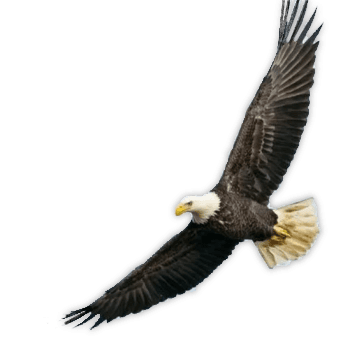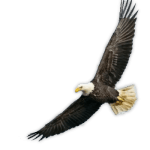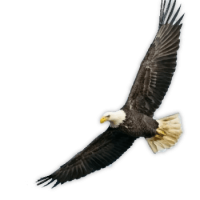Figurative Language
Figurative language refers to words used in a sense that deviates from their obvious or original meaning to add emphasis, flair or encourage understanding. In prose as in poetry, figures of speech are used to prompt the reader’s recollection of sensory experiences, stimulate arresting images, create new associations of meaning and evoke emotions.
The word figure was used over 500 years ago to describe the making of a likeness, such as a portrait painting. This usage helped give rise to figure of speech (singular) and figurative language (plural). These terms are examples of how language evolves by transferring meaning from one setting to another, in this case from visual art to language.
Figures of speech include:
Similes The comparison of one thing with another. These are easy to spot when they use like or as.
• My love is like a red, red rose. Robert Burns
• The air smelled sharp as new-cut wood… Joanne Harris
However, it is also possible to have similes that compare without using like or as.
• Shall I compare thee to a summer’s day? / Thou art more lovely and more temperate. Shakespeare
• He reacted the same way a stuffed fish reacts to bait. Raymond Chandler
Metaphors An expression describing a person, creature or object by referring to analogous quality or qualities for rhetorical effect. Whereas a simile claims that A is like B, a metaphor suggests that A is B.
• There is something of the night about him. Ann Widdicombe
• …potatoes lying in their stiff overcoats of fat… Janet Frame
• …his eyes gentle above the roaring waterfall of a beard. Jeffrey Eugenides
Metaphors can be extended. Longer ones are known as allegories.
• And all the men and women merely players;
They have their exits and their entrances,
And one man in his time plays many parts,
His acts being seven ages… Shakespeare
Often metaphors are repeated throughout a work of literature though not always by repeating the same words. For example, darkness might also be conveyed via night, gloom, heavy cloud, blackness, dullness etc.
Personification Giving something nonhuman or an object human characteristic.
• … a sunshiny day with little winds playing hide-and-seek in it. Katherine Mansfield
Allusion An allusion can act as a figure of speech when suggesting A has the qualities of B. It is a brief reference to a person, place, event, or artistic work that depends on the reader’s knowledge of the source.
• …he saw their Cheshire cat smiles burning through the walls of the house…. Ray Bradbury
Hyperbole Dramatic exaggeration that is often used for humour.
• This is a crisis. A large crisis. In fact, if you’ve got a moment, it’s a twelve-storey crisis with a magnificent entrance hall, carpeting throughout, 24-hour porterage and an enormous sign on the roof saying “This Is a Large Crisis.”
from Blackadder.
Onomatopoeia Human speech has long used simulations of animal and non-animal sounds to covey what a creature or an object sounds like. For example, meow for a cat and chuff chuff for a steam train. Written onomatopoeia is similar, but limited as letters of the alphabet do not convey as much information as the voice. However readers accept this and often appreciate efforts that fire their imaginations rather than using the obvious or familiar.
For example, James Joyce invented tattarrattat to represent knocking on a door rather than using rat-a-tat-tat, which has been in use since at least 1672.
Symbol A symbol suggests a meaning or layers of meaning that are different from the obvious meaning of the source. Sometimes a lions are just lions, e.g. when a travel writer describes seeing them on safari. A fiction writer might refer to lions to convey such ideas as bravery, teamwork, parental devotion, domination, patriarchy, ruthlessness or fierceness.
As a symbol may have multiple meanings, there may be no definitive interpretation. Indeed, some of the greatest works of literature are just that because they can be understood in so many ways. Almost any aspect of a story can act as a symbol; e.g. characters, places, weather, animals, plants, seasons, time of day, objects, travel or mode of travel. Symbols include, among other things similes, metaphors and personification.
The more literal or immediate interpretation of a story may be interesting, but a closer study will suggest far more meaning is contained in the text. E.g. A child might enjoy Animal Farm as a kind of fairy story. To an adult who knows about Stalin’s dictatorship, the text says far more because the symbols are easier to identify.
It is often rewarding to reflect on why the author chose to use particular names, words, phrases etc. or for the reader to consider the impact of the choices. Clues often come in the form of repeated words or similar words and ideas; themes. Sometimes the title or the opening contains a hint, as does what appears to be given prominence or emphasis in other ways. Knowing something about the author and her or his artistic, personal, philosophical, political or social concerns can also help.
For example, knowing something of Franz Kafka’s family background, occupation, private life and feeling about his appearance will add to understanding of stories that might otherwise appear baffling.
Cliché an expression so common that that it has become stale. E.g.
• As white as snow
Spoken clichés might still work because of quality of voice or gesture accompanying them. Printed clichés stand, or more often fall, on their own.
Some other terms you might encounter:
Trope Language, including metaphors, used in a different sense from the literal meaning for artistic effect. Trope can also mean the theme of a piece of writing and the word sometimes hints at a lack of originality.
Metonymy The act of using a word or phrase that describes a feature of a complex or abstract entity to stand for the entity.
• Downing Street is often used as shorthand for the offices and residence of the prime minister and the power that is wielded there.
• The pen is mightier is mightier that the sword. Bulwer-Lytton
Whereas a metaphor suggests A is like B (analogy), a metonymyn takes an aspect of A and uses this to represent the whole
Some Examples of Figurative Language
Collective nouns and the way these imply characteristics of animals such as “a harass of horses”, “a murder of crows” or “an unkindness of ravens”.
The great nations have always acted as gangsters and the small ones like prostitutes. Stanley Kubrick
A nightgown that would turn a monk into Jack the Ripper. R.J. Sterin
So organised he could mind mice at a crossroads. Patrick Campbell
With all the originality and drive of a split fingernail. Raymond Chandler
She was so pumped falls of penicillin and that the fumes cured a cold that I had. Peter de Vries
Rain pouring fit to frighten Noah. G. MacDonald Fraser
Polls are like bikinis; what they reveal is interesting, but what they conceal is vital. Len Murray
I’m as pure as the driven slush. Tallulah Bankhead
Paul Burns 16.11.15 Page 1 of 1


